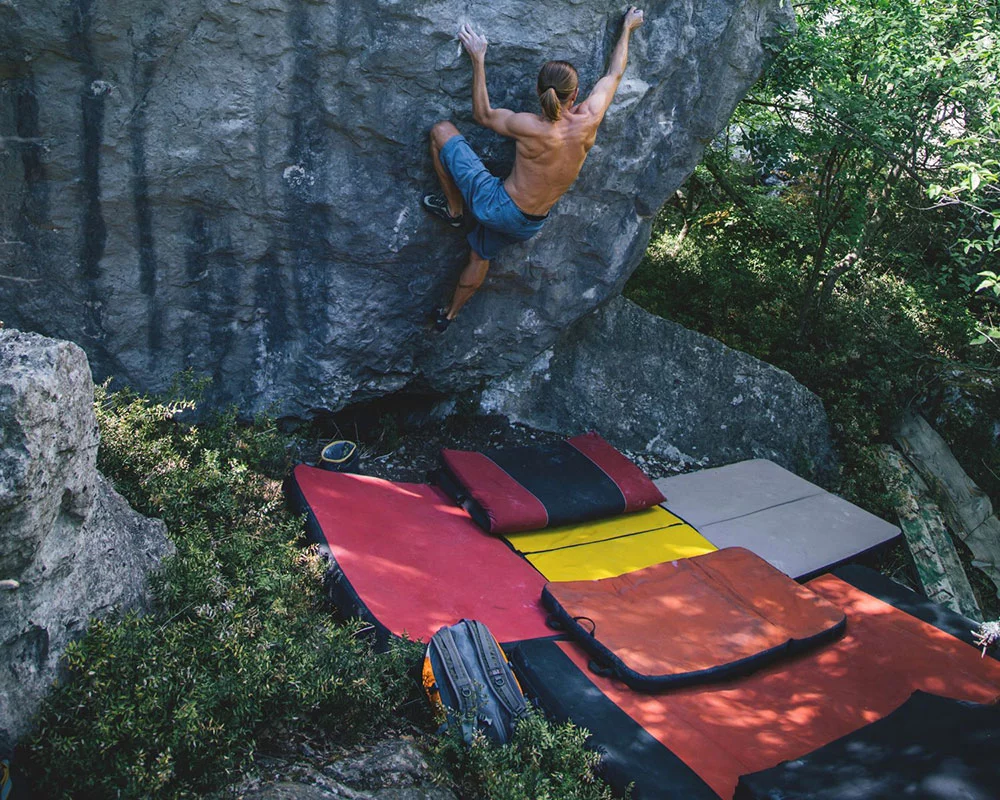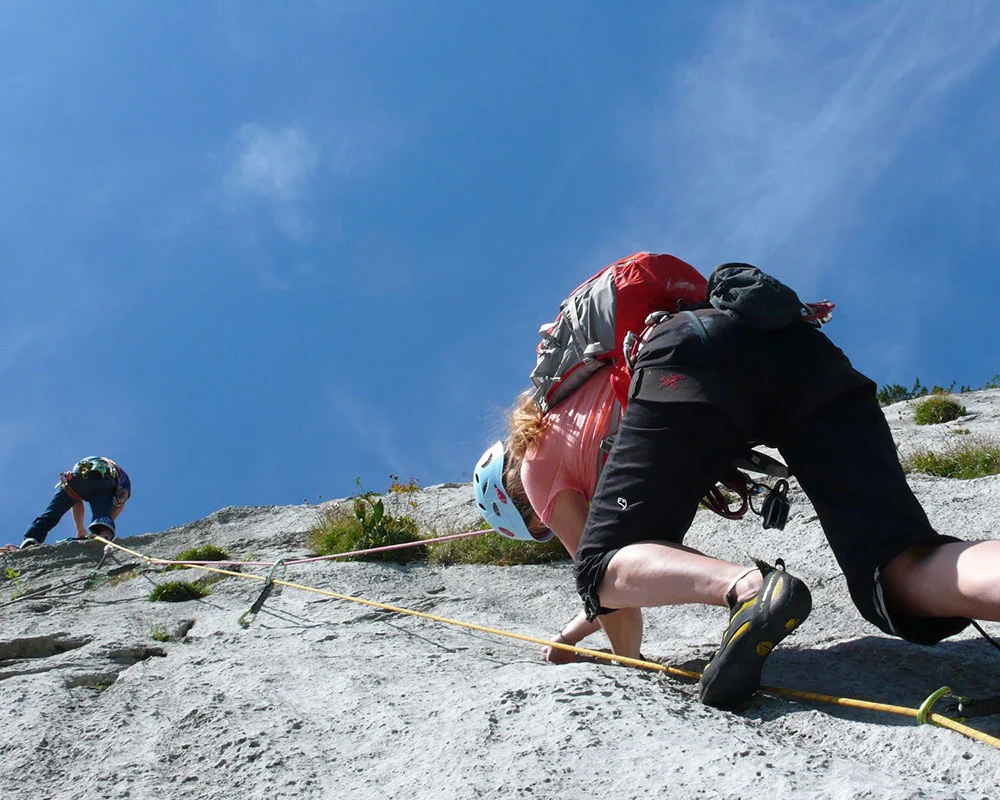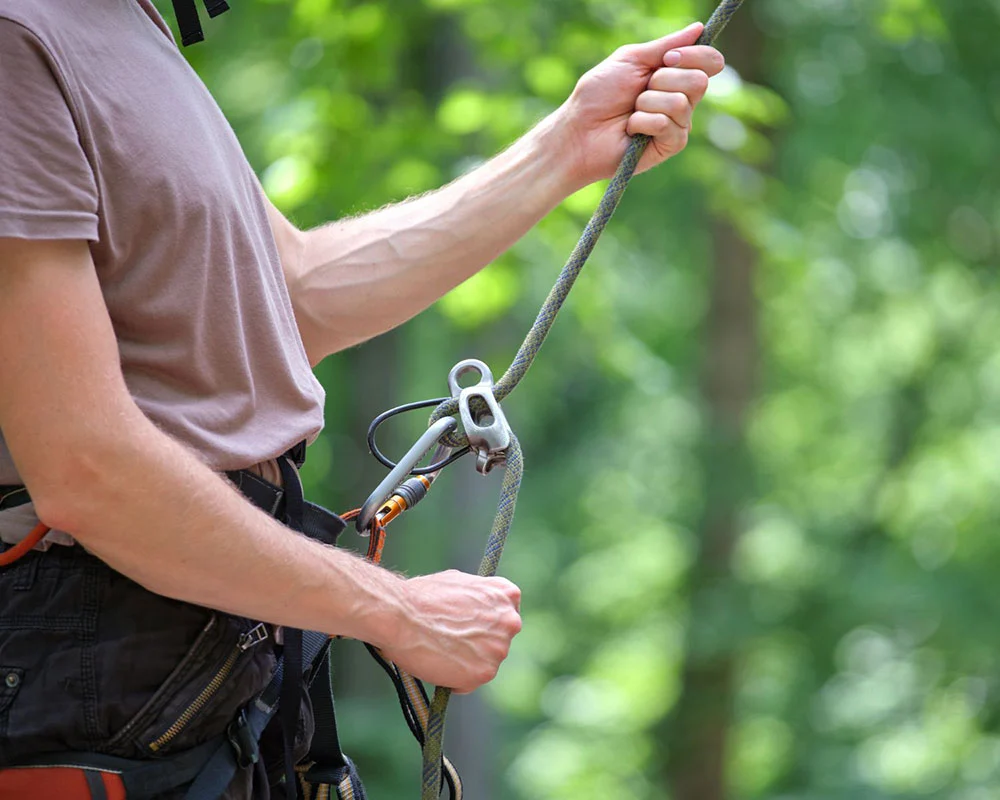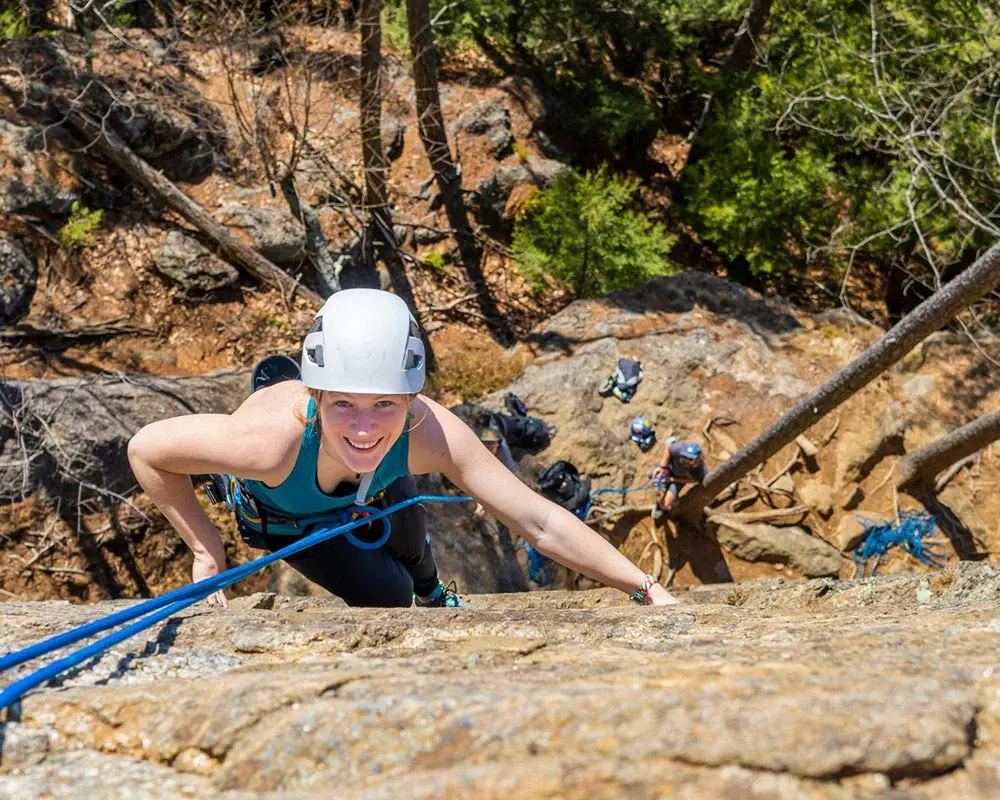How Many Bouldering Pads Do You Need? The number of bouldering pads you need depends on your climbing location and terrain type, but usually, one or two is enough to keep you safe while bouldering.
Why only one or two?
You have to consider a few factors regarding bouldering pads: their cost, the climbing location, the height of the boulder, and your risk tolerance.
This article aims to provide insight into the optimal number of pads you’ll need for varying climbing scenarios.
Key Takeaways
- When determining the number of bouldering pads you need, consider factors such as climbing location, terrain, height and difficulty of the boulder problems, personal comfort level, and risk tolerance.
- Multiple crash pads provide increased landing surface and coverage and better shock absorption during falls.
- Extra crash pads are crucial for highball bouldering or climbs with sparse or uneven landing areas. This ensures a safe bouldering experience and minimizes the risk of injury.
- Bouldering mats are highly recommended for novice climbers or uncertain climbs that need to prioritize safety.
Factors to Consider When Determining the Number of Bouldering Pads Needed
When determining the number of bouldering pads, several factors must be considered. These include:
- Climbing location and type of terrain
- Boulder height and level of difficulty
- Personal comfort and risk tolerance
Let’s go through each one.
Climbing Location and Type of Terrain
One of the exciting aspects of climbing is finding new locations outside. This keeps the sport exciting.
Every site offers unique experiences, obstacles, and different types of equipment. This means that the number and type of pads you’ll need will depend on the climb location and type of terrain presented. Some areas may call for extra padding due to uneven ground or hidden rocks below your fall zone – making additional crash pads necessary to avoid injury.
Inspect the area around the climb before you start bouldering. Regardless of the height from the ground, note the terrain features such as slopes, cracks, and rocks underfoot before setting out. Provide adequate cushioning using suitable high-density foam crash pads to ensure safe landings during every climb.
Height and Difficulty of Boulder Problems
As a basic rule of thumb, the higher you go, the more safety equipment you need.
For taller boulders that are between 7 to 15 feet tall, you’ll need to add more bouldering pads. The height and difficulty of your boulder problems play crucial roles in making this decision.
Picture this: a climber attempting to scale a tall boulder has more distance to fall, hence the need for multiple pads strategically placed in their landing zone.
Now let’s consider difficulty. Boulder problems are rated solely on their physical challenge – not risk factors. Harder climbs can send experienced climbers tumbling unexpectedly toward the mat below.
Creating a large, well-padded area is important for cushioning falls and preventing injuries. Increased padding provides insurance against injuries during those ambitious climbs or intricate traverses.
With safety in mind, you can estimate the number of pads needed for a climb.
Personal Comfort and Risk Tolerance
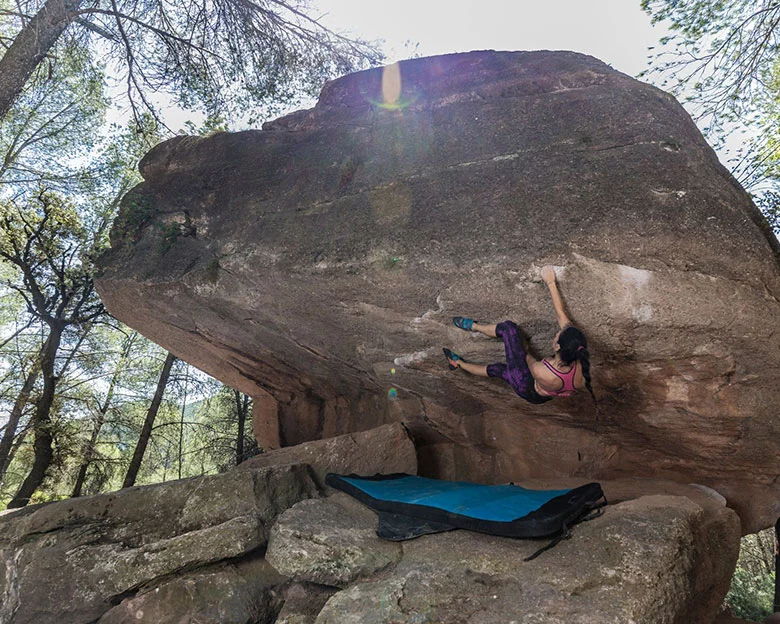
Personal comfort and risk tolerance are pivotal in determining how many bouldering pads you need. They essentially dictate the level of protection you require while scaling those rocky crags.
Each climber has a unique risk tolerance. Some feel secure with just one large, durable mat under a challenging overhang. Others prefer to have more pads underneath for added safety.
Risk tolerance is closely linked to your experience as a boulderer. Seasoned climbers are comfortable with fewer pads because they rely on their well-practiced falling techniques.
Novice climbers, on the other hand, benefit from having additional crash pads. The extra crash mats allow for a softer landing and decrease potential injury. It’s important to prioritize safety at all times. If the unexpected happens, you will also want enough foam density beneath your fall zone to cushion your body.
Minimum Number of Pads Recommended
You always need at least one mat underneath you when you go bouldering.
To determine if you need more than one pad, consider the factors that we discussed above: climbing location, type of terrain, and personal comfort level.
General Guidelines for Various Bouldering Scenarios
Here’s a table summarizing the general guidelines for the number of crash pads needed in different bouldering scenarios:
| Bouldering Scenario | Number of Crash Pads Needed |
|---|---|
| Low-level problems on soft, flat surfaces | 1 large pad |
| Highball bouldering or challenging climbs | Multiple pads for better coverage and shock absorption |
| Sparse and uneven landing areas | Extra pads to ensure a safer landing zone |
Remember that having enough pads cushions your fall and reduces the risk of injuries. Ensuring you have the right padding for each climb is crucial.
Benefits of Using Multiple Pads
Using multiple pads when bouldering offers increased coverage and protection, enhances the landing surface, and provides better shock absorption.
Increased Coverage and Protection
You can place the mats side by side for additional coverage or stack the mats to reduce the height of a fall. Doing both minimizes the risk of injury from falls.
This is especially beneficial when tackling boulders that require more square footage to be covered. Whether it’s traversing across an exposed highball face or conquering a problem with a tricky topout, having multiple crash pads ensures you have ample cushioning to soften any fall.
You’ll notice that experienced climbers prioritize safety at all times and choose to bring along extra pads for their bouldering adventures.
Enjoying Your Climb
Having a safer landing surface can make your bouldering experience more enjoyable. You can focus on the climb with extra mats instead of potentially falling and injuring yourself.
Better Shock Absorption
Using multiple bouldering pads can greatly improve shock absorption during your climbs.
The layers of foam in these pads are designed to soften the impact of falls. This helps reduce injuries like broken bones, sprains, and bruises.
Multiple bouldering pads create a thicker cushion for safer landings. This means that even if you take a hard fall, the force will spread across a larger surface area, resulting in less stress on your body.
So, when it comes to safety and comfort while bouldering, having multiple crash pads is definitely a smart choice.
When to Bring Extra Pads
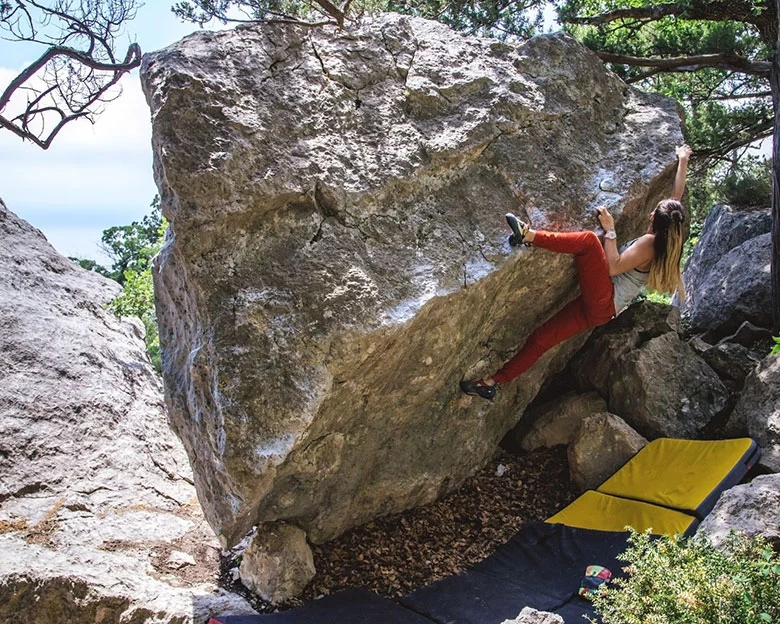
Let’s now cover when you would want to bring extra crash pads.
Highball Bouldering
Highball bouldering is a style of climbing where the boulders are significantly higher off the ground, often requiring the use of multiple crash pads for protection. This type of bouldering can be intense and exhilarating, but safety should always come first.
When engaging in highball bouldering, it is essential to bring extra pads to ensure adequate coverage and protection in case of a fall. The number of bouldering pads needed depends on various factors such as the height and difficulty of the boulder problem, the landing area, and personal comfort levels.
Bring at least two to three large, extra-thick crash pads to minimize the risk of injury during highball climbs. This will give you a larger area to fall onto and more cushioning despite the height of the fall.
Sparse or Uneven Landing Areas
Bouldering in areas with sparse or uneven landing areas can be particularly challenging and potentially dangerous. When the landing area is filled with rocks or has uneven slopes, taking extra precautions is crucial to ensure your safety.
One effective strategy is strategically placing multiple small pads to cover gaps and create a more even surface. This distributes the impact of the fall across several pads, minimizing the risk of injury and increasing your chances of a safe landing.
Smaller pads can also be used to cover large holes or gaps between the rocks. This creates a smoother, level surface to land on.
First-time or Uncertain Climbs
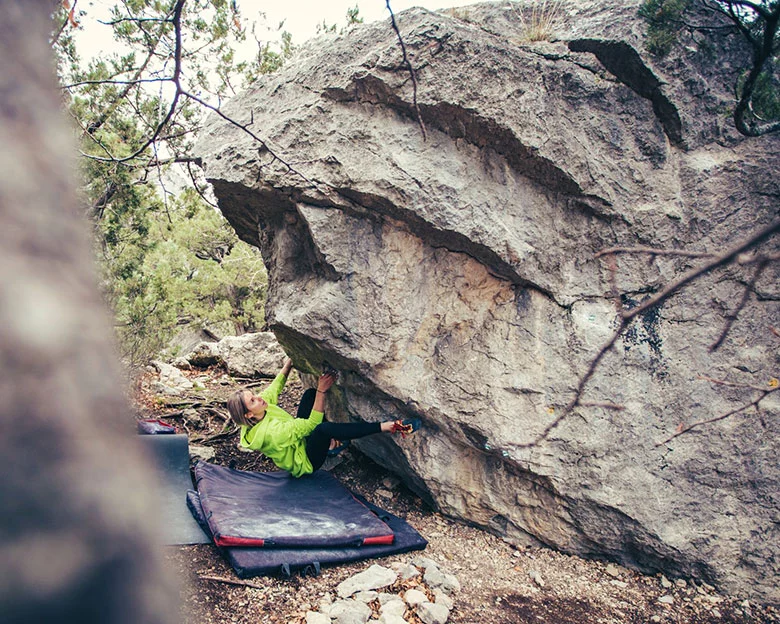
If you’re new to bouldering or uncertain about a climb, having the right number of pads is crucial. As a beginner, it’s important to prioritize safety and minimize the risk of injury.
One pad might be sufficient for low-height climbs with a relatively flat landing area, but it’s always better to have more coverage. Multiple pads provide increased protection by creating a larger landing surface and enhancing shock absorption.
They also come in handy when tackling highball boulders or dealing with uneven or sparse landing zones.
So, whether you’re just starting out or are unsure about a particular climb, having extra crash pads can give you added peace of mind and keep you safe when you go bouldering.
Concerned About Safety? Add More Mats!
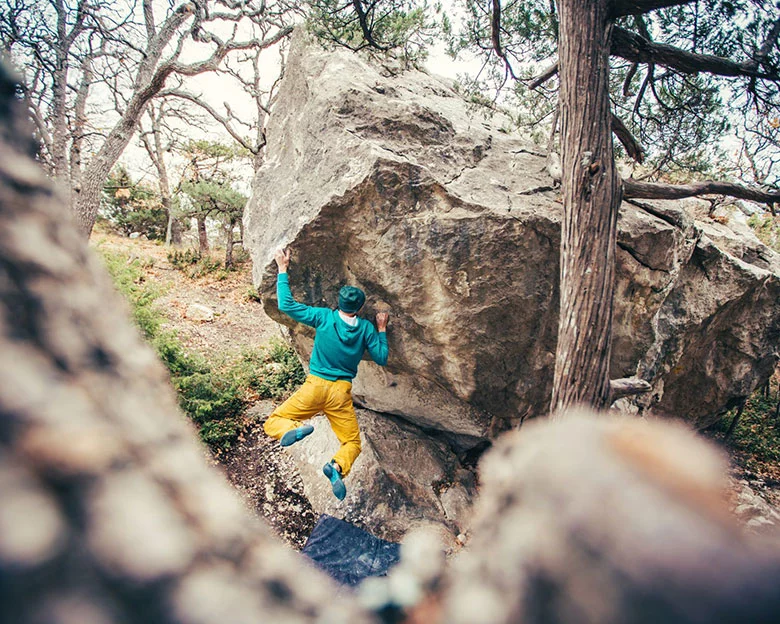
While there are general guidelines for different scenarios, it’s ultimately up to you to assess the level of protection and comfort required.
As a beginner, purchasing at least one bouldering pad is a good investment. Be sure to buy additional pads as you progress to more challenging routes.
Get mats of different sizes and thicknesses for more versatility when stacking or combining them. Don’t skimp on quality. Pick the best mats available on the market today.
Lastly, choose the right pad or pads for your needs and enjoy a safer climbing experience!
FAQs
1.How Many Bouldering Pads Do You Need for outdoor climbing?
The number of bouldering pads you need for outdoor climbing depends on the height and difficulty of the boulder problems you plan to climb. In general, it is recommended to have at least two or three bouldering pads to provide enough coverage and protection.
2. Can I use just one bouldering pad for indoor climbing?
For indoor climbing, having one bouldering pad is usually sufficient as the falls are typically lower and the padding on indoor walls is designed to provide adequate protection. However, having an additional pad can offer extra cushioning and peace of mind.
3. What factors should I consider when deciding how many bouldering pads to invest in?
The more bouldering pads you have, the better. Try to get mats of different sizes for more versatility. Factors you should consider include your skill level, the types of climbs you intend to attempt (e.g., highballs or low-level traverses), terrain (rocky versus flat ground), and financial capability.
4. Is it better to have smaller or fewer larger-sized bouldering pads?
Both options have their advantages depending on personal preference and specific climbing situations. Smaller-sized pads allow for versatility in placement and covering uneven terrain.
Larger-sized bouldering pads are harder to transport because of their bulk but offer better protection because of their size and thickness.

